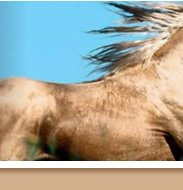![]()
![]()
![]()
![]()
![]()
![]()

![]()
![]()
![]()
![]()
![]()
ArticlesAfrican Horse Sickness a Spreading concernAfrican horse sickness, a potentially fatal, untreatable illness of equines, has a 95% fatality rate in some forms. It is infectious, and seems to be spreading further north with global warming. If a case of this notifiable disease were to be found in the UK, we may find a foot and mouth-type slaughter situation occurring among our equines. Aetiology: Midges carry the orbivirus pathogen of African horse sickness. It is endemic in horses, mules and donkeys of sub-Saharan Africa. Zebras appear to be relatively unaffected. Elephants appear to carry the illness subclinically, and dogs can be severely affected, usually from eating infected meat. Clinical Signs: This disease has several subtypes: Acute Pulmonary Type: These animals will be febrile (temperature >40.5°C, sweating, and severe respiratory signs - coughing, laboured breathing, yellow frothy nasal discharge. There may also be congested mucous membranes, and collapse and death can occur within a few hours. There is a 95% mortality, but survivors have severe respiratory distress for several weeks. Subacute Cardiac Form: In this form the heart is more greatly affected. Signs include pericardial effusion (fluid between the muscle and outer covering of the heart), pleural effusion (fluid in lungs, due to heart failure), endocarditis (inflammation in the inner layer of heart muscle, the endocardium), swelling of head, neck & chest (oedema, due to heart failure), and cyanosis (blue colour due to lack of oxygen in the blood) of mucous membranes. petechiae (red specks of blood where it is leaving the smallest blood vessels) may be evident on the mouth and under the tongue. Fever tends to be intermittent, and there is a 60% mortality, from heart failure. Mixed form: In this there is a cCombination of respiratory followed by cardiac symptoms, and the incubation period is 3-7 days Chronic febrile type: This is a less severe form and is often subclinical. It is rarely found in horses as they are so susceptible to the severe forms of the illness, and is found more often in donkeys and mules. Signs include fever in the first few days of infection, appetite loss (anorexia), mild cough, and conjunctivitis Current Western Treatments: It is fundamentally important to seek the urgent opinion of your veterinarian. No active treatment is currently possible, and in the European Union all affected animals will be compulsorily slaughtered. Supportive nursing care may help in other areas of the world. A further possibility is vaccination - 9 subtypes have been isolated, each has its own vaccine; two injections are needed & the effect is relatively short-lived. Limiting Outbreaks: It is possible that the virus spends part of the year in Africa in subclinically affected, unrecognised hosts, while the midges are inactive. This may be the reason why, to date, outbreaks in Spain have been short-lived. Such outbreaks may have been from importing infected zebras. Horses imported into the European Union are routinely tested for African horse sickness. EU Council Directive 92/35 provides for compulsory notification of cases, and the setting up of a protection zone of least 100 kilometres radius around any infected premises, to remain in force for at least 12 months. Complementary Therapies: This is a notifiable disease in the United Kingdom. Many complementary therapies such as healing, Reiki and massage will help with supportive nursing care in cases likely to recover (and in countries where the animals will not be put down). Also remember how useful healing and Reiki can be when an animal does have to be put down, both for easing its passing & helping the owner. Conclusion: This devastating illness is too infectious for affected animals to be allowed to survive. It may spread North from Africa with global warming, and a few cases have been seen in Spain. In the UK, if a case was to be found, the management is likely to be similar to that of Foot and Mouth Disease. Copyright (c) 2008 The Naturally Healthy Pet.com. Dr Alison Grimston is a holistic doctor and animal healer specializing in connecting and informing animal therapists. Her natural animal therapy website informs the public about animal therapies while connecting animal therapists worldwide. http://www.TheNaturallyHealthyPet.com Horses How to Get Free Garbage Bags - The scenario: A newlywed couple moves into their new home. supply SinoNSH GER Gas Engine Oil Regenerationoil purifieroilpurificationoil filtrationoil rec - NSH GER Gas engine oil regeneration(oil purifier,oil purification,oil filtration,oil filter,oil treatment,oil recycling,oil regeneration,oil filtering, oil reclaim plant,oil recovery,waste managment,oil disposal,oil reclamation. Enjoying the Beauty of the Spring Season - The spring of the year is a favorite season for many people, and it is certainly easy to understand why this is so. sell sinonsh insulation oilrecyclingfilterpurifierfiltrationpurificationregenerationtreatme - VFD--Double-Stage High-Efficiency Vacuum Insulation Oil Purifier Application VFD series is mainly used to improve the properties of insulation oil. New York Green Building Initiative - As is occurring in many states, New York is trying to promote Green Building practices. more... |
![]()
![]()
ęCopyright 2026 Alhaja.net All rights reserved.
Unauthorized duplication in part or whole strictly prohibited by international
copyright law.
![]()



